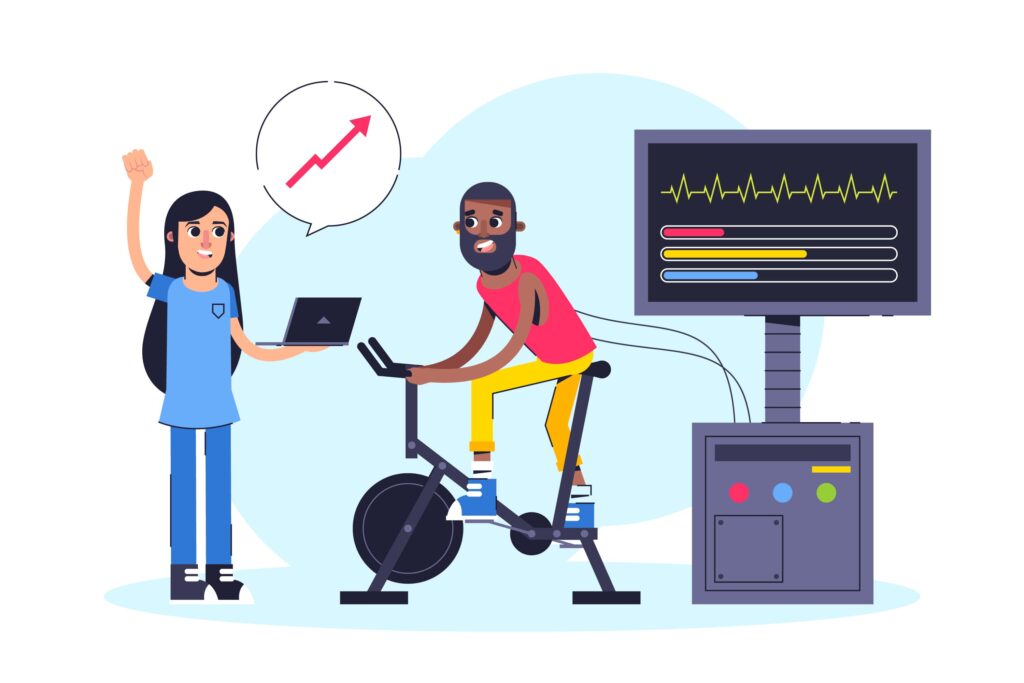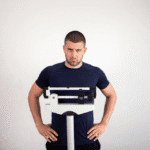Introduction
When it comes to fat loss, most people immediately think of intense, sweat-dripping sessions like HIIT or boot camps. While high-intensity training has its place, it’s not the only effective path to burning fat. In fact, LISS workouts for fat loss offer a sustainable, low-stress approach that can deliver excellent results—especially when paired with the right nutrition and consistency.
In this guide, we’ll explore what LISS cardio is, how it works, and why it may be the most underrated tool in your fat-loss arsenal. Whether you’re a beginner, recovering from injury, or looking for a low-impact way to accelerate your results, LISS can be a game-changer.
What Is LISS Cardio?
LISS stands for Low-Intensity Steady-State cardio. It involves performing cardiovascular exercise at a consistent, moderate pace for an extended period—usually 30 to 60 minutes. Think brisk walking, cycling, swimming, or using the elliptical machine at a steady pace where you can still hold a conversation.
Unlike HIIT (High-Intensity Interval Training), which alternates between short bursts of high effort and recovery, LISS keeps your heart rate relatively stable—typically in the 50–65% range of your maximum heart rate.
How LISS Workouts Burn Fat
LISS workouts promote fat loss by keeping your body in the aerobic zone, where fat is the primary fuel source. This low-intensity effort doesn’t deplete glycogen stores as quickly, meaning your body leans more on fat for energy during the session.
Here’s how it supports fat loss:
- Prolonged calorie burn: While LISS doesn’t burn as many calories per minute as HIIT, the longer duration makes it effective for total energy expenditure.
- Fat oxidation: At lower intensities, your body is better able to oxidize fat as a fuel source.
- Improved recovery: Because LISS is low-impact, it helps burn calories without stressing your nervous system or joints, making it perfect for active recovery days.
According to Harvard Health, walking at 4 mph burns around 135 calories in 30 minutes for a 155-pound person—more if you’re heavier or walking uphill.
Benefits of LISS Workouts for Fat Loss
LISS isn’t just about fat burning—it offers a wide range of benefits, particularly for individuals looking for a more sustainable and joint-friendly approach to fitness.
✅ Joint-Friendly and Low Impact
LISS puts less stress on your joints compared to jumping or sprint-based workouts. This makes it ideal for beginners, older adults, or anyone with joint issues.
✅ Easy to Stay Consistent
Because it’s less physically taxing, people are more likely to stick with LISS routines consistently. And as we always say—consistency beats intensity when it comes to long-term fat loss.
✅ Supports Recovery and Reduces Stress
LISS can be done even on rest days. It promotes blood flow, reduces muscle soreness, and can even lower cortisol (the stress hormone), making it a helpful addition for those who are over-stressed or under-recovered.
✅ Complements High-Intensity Training
Instead of replacing HIIT, LISS can be a perfect complement. Alternate between both throughout the week for metabolic flexibility and fat-loss optimization. Learn more in our article on HIIT vs Strength Training: Which Is Better for You?
Best LISS Workouts for Fat Loss
Here are some simple yet effective LISS workout ideas that you can do at home, outdoors, or in the gym.
1. Brisk Walking
- Duration: 45–60 minutes
- Equipment: None
- Ideal for beginners and anyone looking for a daily habit. You can walk outdoors or on a treadmill with a slight incline for extra intensity.
2. Stationary Cycling
- Duration: 30–60 minutes
- Equipment: Stationary or road bike
- Maintain a pace that keeps your heart rate in the aerobic zone. Perfect for people with lower-body joint concerns.
3. Swimming Laps
- Duration: 30–45 minutes
- Equipment: Pool
- Low-impact and full-body, swimming is a fantastic LISS option that also improves cardiovascular health.
4. Elliptical Trainer
- Duration: 30–60 minutes
- Equipment: Gym or home elliptical
- Less joint stress than running, with adjustable resistance and incline settings.
5. Light Jogging
- Duration: 30–45 minutes
- Equipment: Running shoes and open space
- A gentle jog at a conversational pace still qualifies as LISS, as long as intensity is moderate and steady.

How to Program LISS into Your Fat-Loss Routine
A common mistake people make is thinking LISS alone will shred body fat. While it’s effective, it works best when combined with a calorie-controlled diet, strength training, and possibly some HIIT sessions each week.
Here’s a sample weekly structure:
- Monday: Strength Training
- Tuesday: LISS (Brisk walk or elliptical)
- Wednesday: Strength Training
- Thursday: LISS (Stationary bike or swim)
- Friday: HIIT or Circuit Workout
- Saturday: LISS (Jog or long outdoor walk)
- Sunday: Rest or optional yoga
If you’re unsure about your calorie needs, use our Maintenance Calorie Calculator to get started and adjust based on your weekly activity level.
LISS vs HIIT: Which One Should You Choose?
Both forms of cardio can contribute to fat loss, but they serve different roles.
- HIIT is more time-efficient, burns more calories per minute, and improves anaerobic capacity. However, it’s also more taxing and requires more recovery.
- LISS is better for stress management, active recovery, and longer-duration calorie burn with lower fatigue.
Many people find success combining both—using HIIT 1–2 times per week and LISS 2–4 times, depending on recovery and goals. If you’re already weight training intensely, adding LISS can support fat loss without interfering with performance.
Common Mistakes to Avoid with LISS
- ❌ Relying solely on LISS: Cardio without a strength-training base can lead to muscle loss. Include resistance training for body composition improvements.
- ❌ Going too hard: Keep intensity truly low. Going too fast turns it into a moderate-intensity session, which misses the benefits of LISS.
- ❌ Skipping nutrition: LISS burns calories, but if you’re overeating or not tracking, you may not lose fat.
To structure your meals effectively, read our guide on Meal Planning 101: Save Time, Eat Healthy for fat-loss meal prep strategies that pair perfectly with LISS training.
Conclusion
LISS workouts for fat loss are an excellent addition to any fitness routine—especially for those looking for a joint-friendly, sustainable way to shed fat. They’re simple to start, easy to stick with, and gentle enough to perform several times per week without burning out.
While it may not have the hype of high-intensity workouts, LISS delivers quiet consistency—and that’s where real transformation happens. When paired with strength training, a calorie-conscious diet, and good recovery, LISS can help you achieve your body composition goals with less wear and tear.
👉 Ready to get started? Try adding 3–4 LISS sessions to your weekly schedule and see how your energy, mood, and results improve.



